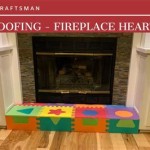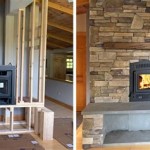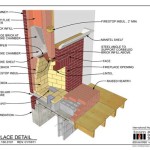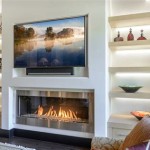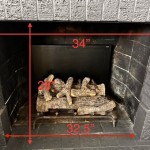Stone Veneer for Fireplace Surround: A Comprehensive Guide
The fireplace serves as a focal point in many homes, offering warmth, ambiance, and a gathering place for family and friends. Enhancing the fireplace surround can significantly impact the aesthetic appeal of a living space. Stone veneer has emerged as a popular and versatile option for achieving a sophisticated and natural look without the weight and expense associated with natural stone.
This article provides a comprehensive guide to using stone veneer for fireplace surrounds, covering various aspects from material selection and design considerations to installation techniques and maintenance practices. The goal is to equip homeowners and contractors with the knowledge necessary to make informed decisions and achieve a visually appealing and durable fireplace surround.
Stone veneer is a manufactured product designed to replicate the appearance of natural stone. It is typically made from a mixture of concrete, aggregates, and pigments, which are molded and colored to resemble different types of stone. The veneer is significantly lighter and thinner than natural stone, making it easier to install and less demanding on the underlying structure.
The use of stone veneer for fireplace surrounds offers several advantages. It is more cost-effective than natural stone, making it an attractive option for budget-conscious homeowners. The lightweight nature of the material simplifies installation, reducing labor costs and project timelines. Stone veneer is also available in a wide variety of styles, colors, and textures, allowing for greater design flexibility.
Furthermore, stone veneer is durable and resistant to weathering, providing a long-lasting and aesthetically pleasing finish. It is also relatively low-maintenance, requiring minimal upkeep to retain its appearance.
Understanding Stone Veneer Types and Styles
Stone veneer is broadly categorized into two main types: manufactured stone veneer and natural thin stone veneer. Manufactured stone veneer, as previously described, is a man-made product created to mimic the look and feel of natural stone. Natural thin stone veneer, on the other hand, consists of genuine stone that has been cut into thin pieces. While both options offer similar aesthetic benefits, they differ in material composition, installation requirements, and cost.
Manufactured stone veneer provides a wider range of styles and colors due to the manufacturing process. It allows for consistent texture and color throughout the product, ensuring a uniform appearance. The manufacturing process also allows for the creation of unique stone shapes and sizes, expanding design possibilities. Popular styles include fieldstone, ledgestone, river rock, and brick veneer.
Fieldstone veneer replicates the look of irregularly shaped stones found in natural landscapes. It offers a rustic and organic aesthetic, making it suitable for traditional or country-style homes. Ledgestone veneer features long, thin pieces of stone stacked horizontally, creating a linear and contemporary appearance. River rock veneer, characterized by smooth, rounded stones, adds a natural and textured element to the fireplace surround. Brick veneer provides a classic and timeless look, mimicking the appearance of traditional brickwork.
Natural thin stone veneer offers the authentic look and feel of real stone. It showcases the natural variations in color and texture inherent in natural stone formations. The limited availability of certain natural stone types can influence the cost and lead-time for specific veneer styles.
When selecting a stone veneer style, consider the overall design aesthetic of the room and the desired look for the fireplace. Factors such as color palette, architectural style, and personal preferences should influence the decision-making process. The texture and pattern of the veneer can significantly impact the perceived size and character of the fireplace. Light-colored veneers can create a brighter and more spacious feel, while darker veneers can add depth and drama.
Design Considerations for a Stone Veneer Fireplace Surround
Designing a stone veneer fireplace surround involves careful planning and consideration of various factors. The dimensions of the fireplace, the size of the room, and the overall architectural style are crucial elements to consider. The design should be proportionate to the space and complement the existing décor.
The size and shape of the fireplace opening will influence the layout and pattern of the stone veneer. A larger fireplace may require a more substantial stone veneer pattern to maintain visual balance. Conversely, a smaller fireplace may benefit from a more delicate or intricate design.
The color and texture of the stone veneer should harmonize with the surrounding walls, flooring, and furniture. Consider the existing color palette and choose a veneer that complements or contrasts intentionally to create visual interest. Using color swatches and samples can help visualize the final look and ensure a cohesive design.
The use of a mantel can enhance the aesthetic appeal of the fireplace surround. A wooden mantel adds warmth and character, while a stone mantel creates a more cohesive and natural look. The mantel should be proportioned to the size of the fireplace and positioned at a comfortable viewing height.
Consider incorporating other design elements, such as lighting, to accentuate the stone veneer. Recessed lighting can highlight the texture and color of the veneer, creating a dramatic effect. Sconces mounted on either side of the fireplace can provide ambient lighting and add visual interest.
The scale of the stone veneer is an important design factor. Larger stones can create a bolder and more rustic look, while smaller stones offer a more refined and elegant appearance. The choice of stone size should be based on the overall design aesthetic and the size of the fireplace.
The grout color can significantly impact the overall look of the stone veneer. A contrasting grout color can accentuate the individual stones, while a matching grout color creates a more seamless and uniform appearance. Experimenting with different grout colors can help achieve the desired visual effect.
Step-by-Step Guide to Stone Veneer Installation
Installing stone veneer requires careful preparation and attention to detail. It is recommended to consult with a qualified contractor or installer to ensure the job is done correctly. However, with proper planning and execution, homeowners can successfully install stone veneer for their fireplace surround.
The first step is to prepare the surface. The surface on which the stone veneer will be installed must be clean, dry, and structurally sound. If the surface is painted or coated, it must be roughened to provide a better bonding surface. Concrete or masonry surfaces may require cleaning with a wire brush to remove any loose debris.
Next, apply a scratch coat of mortar to the surface. The scratch coat provides a textured surface for the stone veneer to adhere to. Use a notched trowel to apply the mortar evenly and create horizontal grooves in the surface. Allow the scratch coat to dry for at least 24 hours before proceeding.
Prepare the stone veneer by laying it out on the floor in the desired pattern. This allows you to visualize the final look and make any necessary adjustments. Mix the mortar according to the manufacturer's instructions. Use a margin trowel to apply a thin layer of mortar to the back of each stone veneer piece.
Press the stone veneer firmly onto the scratch coat, ensuring good contact between the mortar and the surface. Start at the bottom of the fireplace surround and work your way up. Use a level to ensure that the stones are properly aligned. Maintain consistent spacing between the stones to create a uniform look.
Once the stone veneer is installed, allow the mortar to dry for at least 24-48 hours before grouting. Mix the grout according to the manufacturer's instructions. Use a grout float to apply the grout to the spaces between the stones. Work the grout into the joints, ensuring that they are completely filled.
After the grout has set for about 30 minutes, use a damp sponge to remove any excess grout from the surface of the stone veneer. Rinse the sponge frequently to avoid smearing the grout. Allow the grout to fully cure according to the manufacturer's instructions. Clean the stone veneer with a mild detergent and water to remove any remaining residue.
Sealing the stone veneer can provide added protection and enhance its appearance. Use a sealant specifically designed for stone veneer and apply it according to the manufacturer's instructions. Sealing the veneer can help prevent staining and make it easier to clean.
Following these steps will help ensure a successful stone veneer installation for a fireplace surround, creating a visually appealing and durable focal point for the home.

Natural Stacked Stone Veneer Fireplace Ideas

Stone Veneer Interior Design Living Room Kitchen Bedroom Ideas More Buechel

Stone Fireplace Surround Ideas You Ll Love Columbia Mo

11 Stone Veneer Fireplace Surround Design Trends Where To Buy

Can I Install Stone Veneer Around My Gas Fireplace Stoneyard

Fireplaces Eldorado Stone

The Benefits Of Thin Stone Veneer For Your Fireplace

Stone Veneer Fireplace Ideas That Will Warm Up Your Home Ply Gem

Thin Stone Veneers Make A Fireplace Update Easy

11 Stone Veneer Fireplace Surround Design Trends Where To Buy
Related Posts



